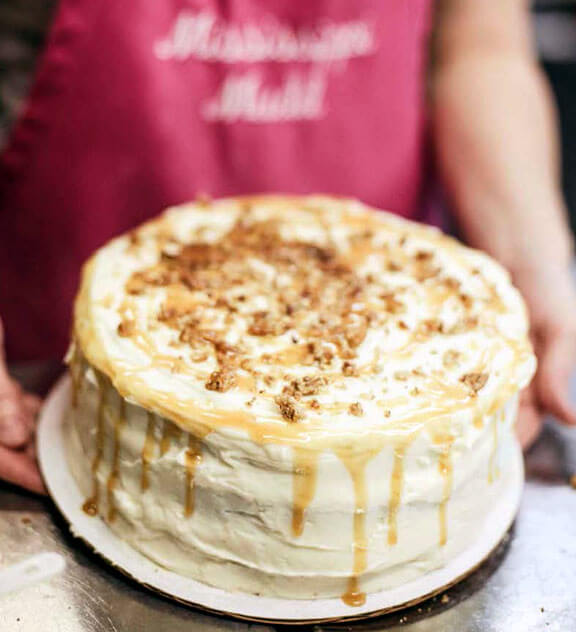Every day so far in my nascent life as a bookseller, I go through boxes of books. I can hardly keep up with the donations; just when I think I am finally getting caught up, someone comes in with say, seven boxes of books from their home in Iowa, or a box of children’s books culled from their kids’ bookshelves, and I begin again.
I love it. I love digging through books, with no idea what I am going to find next. Going through a box of self-help books and mass market paperbacks, I find a 90s edition of Tales of the City; Somerset Maugham lurks under Nicholas Sparks. In true crime paperbacks from the 2000s, I discover a couple of Fitzgerald’s “Great Brain” books, and three “Black Beauty” volumes. You have to know what you are looking for, to have the eureka moment. I like to leave little surprises scattered through the bookstore for discriminating readers. I know when I have a kindred spirit, because I hear little gasps of delight as they find an unexpected treasure on a lower shelf.
My academic life has always been about hidden treasure. When I first moved to Mississippi, I read John Howard’s Men Like That, and he gave me a vision of a vast queer Mississippi underground, erupting in newspaper stories, highway rest stops, and bookshelves. He introduced me to three gay Mississippi writers, including Hubert Creekmore, Water Valley native, poet, novelist, translator, and editor. I checked Creekmore’s The Welcome out of the UM library; it took me over ten years to locate a copy. I have been asking every editor at the University Press of Mississippi to reprint the novel, with no success. Opening a queer feminist bookstore in Creekmore’s hometown is, I hope, the first step in a campaign to bring him back in print.
I love digging around in archives. I spent two weeks hunting for fan letters in Christopher Isherwood’s papers. I found amazing ones, including a young man from North Carolina who mailed Isherwood photographs of his lovers, with detailed commentary on the back of each; water color portraits in a handwritten tribute; flirty come-ons from English teenagers. He wrote them all back, and often invited them to his house. At Duke University, I found the papers of fantastic Southern lesbian feminists. They kept everything—not just letters with agents and editors, but love letters from exes, flyers for readings, gossip and descriptions of parties and chance encounters. Dorothy Allison’s are my favorite. Most archives organize correspondence by letter writer, and store them alphabetically. Dorothy Allison kept every piece of mail she received in order and has them in her archive by date. One has to really dig to find the gems. But in between, you get a sense of her life as it was lived: Flip; a flyer for a reading; flip, a letter to her friend about her recent breakup; flip, a letter to her agent; flip, an invitation to an S/M sex party; flip, a letter to a manufacturer complaining about a defective whip she received in the mail; flip, a letter from Cris South, a member of the Feminary collective and novelist, about her forthcoming book and her shifting identity from butch to bottom; flip, a contract from her editor. Finding the treasures was a delight, but so was the rich tapestry of a live lived in real time, without a sense of what would be seen as ‘important’ later. That sequence is what makes it important, even as the gems I uncover become part of another narrative forming in my own head.
The treasures are the stories I share when people wonder how I could spend seven years working on a book. But the truth is I love the searching as much as I love the discovery. Doing research has taught me patience, something that my wife Dixie tells me I sorely need. She’s right. Chefs understand this, of course. You can’t rush the rising of the dough, the marinade on the pork, or the brine on the turkey; slow-roasted vegetables in the oven are better than the microwave or boiling water. I have a tendency to want things right away, but Dixie knows that the best things take time. Writing a book teaches you that, too. You can’t dash off a dissertation, or a book, in a series of all-nighters. You have to work a little bit every day, without being able to see the end; you research, and write, and revise, and repeat, endlessly. To sustain this, you must learn to love the process, to learn to love the questions themselves, as Rilke put it: ““Be patient toward all that is unsolved in your heart and try to love the questions themselves, like locked rooms and like books that are now written in a very foreign tongue. Do not now seek the answers, which cannot be given you because you would not be able to live them. And the point is, to live everything. Live the questions now. Perhaps you will then gradually, without noticing it, live along some distant day into the answer.”
Violet Valley Bookstore is the same. I have no idea how I am going to keep the bookstore going once the semester starts, with a full-time job, how it will evolve, whether it can become self-sustaining. Dixie tells me I don’t have to. I have an emergency savings account, with enough for hard expenses to last six months. I have a plan, month-to-month, six-months to six-months. I have a vision. But I also love the process—the arrival of books, the evolving categories on the shelves, the unexpected visitors to the store, from San Francisco and Durham and Jackson and Oxford. I love the excited teenagers, taking photos for Snapchat, and the serious bibliophiles, touching the vintage Mississippi textbooks. I would like this little 10×40 foot bookshop to be a hidden treasure in Mississippi for years to come.



